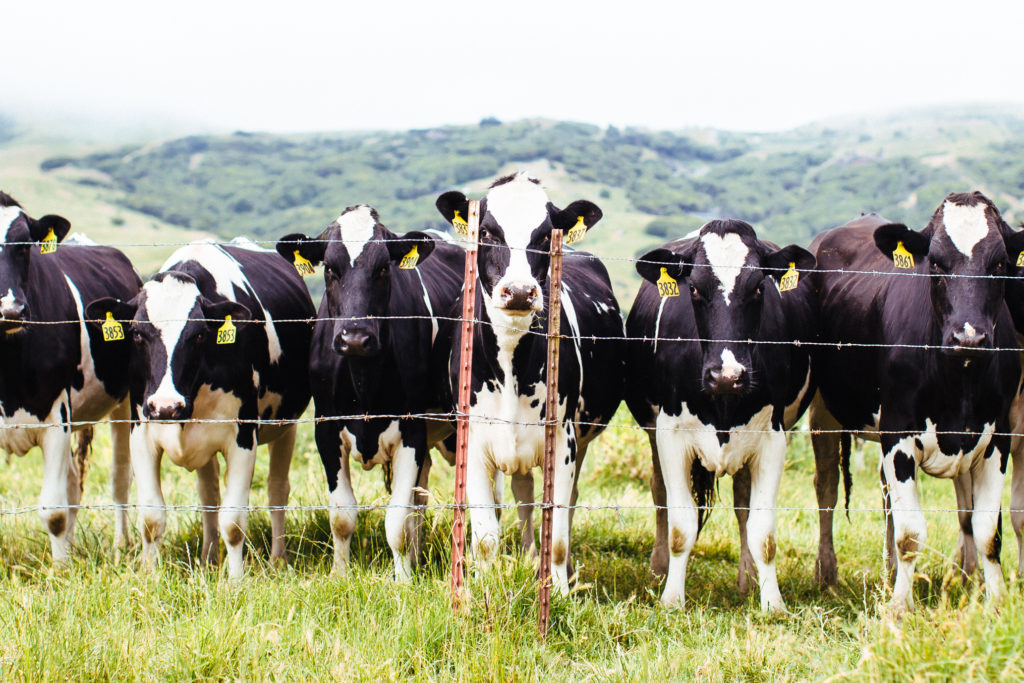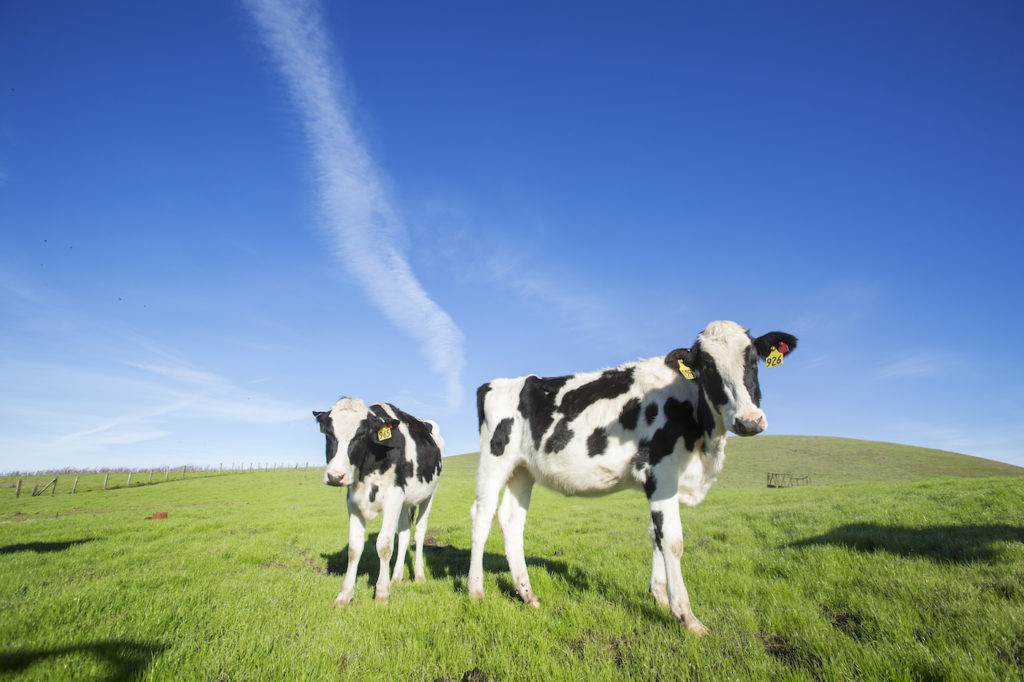Carbon-Negative Dairying: MALT ‘Our Common Ground’ Conversation Recap
October 8, 2021
Is carbon-negative dairying possible? If so, what might it take to achieve it? And why should anyone who isn’t a dairy farmer care?
These questions drove the topic of the first episode of MALT’s ‘Our Common Ground’ conversation series, held on September 29, 2021. MALT CEO Thane Kreiner, Ph.D., and five diverse, distinguished panelists explored whether it’s possible to turn cows from greenhouse gas emitters to net-zero carbon producers—and to rethink the entire milk-producing process so that it’s responsible for net-negative carbon emissions into the atmosphere.
Here are some highlights of the lively panel discussion. Click here to read about the event in Dairy World.
Thane Kreiner: Much of Marin County’s agricultural land is used to graze beef and dairy cattle, and agriculture is also the largest source of greenhouse gas emissions in Marin. With more than half of Marin’s agricultural land protected permanently for agricultural use under MALT agricultural conservation easements, we have a vested interest in helping to surface creative, science-based ways to tackle this issue.
Let’s start with some basics. Marjorie, what does ‘carbon-negative’ mean, and how do we think about the different greenhouse gases?
Marjorie Went, chemical engineer who teaches classes at UC Berkeley focusing on sustainability, carbon management, and climate solutions technologies: Carbon-negative means removing more carbon from the atmosphere than is generated. And because some emissions are prohibitively difficult or costly to remove, we also have to remove some greenhouse gases that are already in the atmosphere.
“Carbon-negative or neutral dairy farming is achievable within 10 years in the Marin County region of California, according to a panel of experts.“
READ MORE at DAIRY GLOBAL
The most prevalent greenhouse gases are carbon dioxide, CO2, and methane, CH4, but they’re not created equal. On a 20-year timescale, methane emissions are more than 85 times worse than CO2 emissions. Because agriculture contributes significantly to methane emissions, carbon-negative dairying presents an opportunity to make a big impact on climate change.
Some things to explore:
- Collect the methane emitted by decomposing waste, such as in waste lagoons, and combust it in an engine to produce energy. While this does release carbon into the atmosphere, it’s as CO2 rather than the much more potent methane. Plus, you’re avoiding using fossil fuels for whatever energy you get from the biogas.
- Convert the biogas to renewable natural gas, which can be sold to the grid or used in vehicles if it’s converted to compressed natural gas. With policy incentives, the value of renewable natural gas produced from dairy waste can be 15 times that of fossil-derived natural gas.
- Take the CO2 separated from the biogas and sequester it underground.
- Address the greenhouse gas emissions involved in transporting feed, especially from distant places like India or Turkey, and fertilizing the land with commercial fertilizers, which require significant energy to produce and transport.

Thane: That’s a great list to start working from. Joseph, tell us a bit about some of the climate-beneficial practices that Straus Family Creamery is already implementing.
Joseph Button, sustainability director at Straus Family Creamery: Straus Family Creamery in Sonoma County sources milk from 12 local dairy farms. One of those farms, the organic Straus Dairy Farm, has a goal of being carbon-neutral at the farm gate by 2023. We’re already about halfway there, and we’re proving that it’s possible for dairies to achieve net carbon neutrality.
There are four major areas we’re addressing on our pathway to carbon-negative operations:
- Methane from manure lagoons, where we’re using a small-scale microbiology biodigester to process the manure rather than let it sit around and emit methane.
- Enteric methane from cow burps, the biggest source of methane on the majority of the farms in our network, which can be reduced by up to 95% by using a particular variety of red seaweed in the cows’ feed.
- Decreasing fossil fuel usage on the farms through electrification of vehicles.
- Sequestering carbon into the soil across the hundreds of acres of pasture land, which is maybe the most exciting approach for an organic dairy farm.
Thane: For those of us who have the privilege to choose what we eat, we have a responsibility to not only understand where and how our food is produced, but also to support those food producers who are taking steps toward becoming carbon-neutral or carbon-negative. The reality, though, is that not every farm can afford to take the necessary steps. Randi, what are some ways that these effective practices can be funded?
Randi Black, UC Cooperative Extension dairy advisor for Marin, Sonoma, and Mendocino counties: Funding is often one of the biggest roadblocks for farmers, because they don’t generally have a lot of spare change lying around. Fortunately in California we have lots of great state programs that dairy producers can apply for, including:
- Healthy Soils, a no cost-share program that helps farmers put compost on pastures, plant trees, and do other practices that sequester carbon in the soil.
- SWEEP (State Water Efficiency and Enhancement Program), which helps farmers use water more efficiently while also emitting less carbon.
The state also engages in partnerships with entities like MALT, the Marin Resource Conservation District (RCD), the Sonoma RCD, and private companies such as FYTO.
We also need to think about addressing the various sources of dairy farm emissions as well as ways to mitigate those emissions:
- The cow’s main contributions to emissions are belched methane, plus the methane released from their manure. As Marjorie mentioned, certain kinds of feed can reduce the methane belched, and adding oxygen to the anaerobic environments of manure lagoons can reduce their methane emissions.
- Feeding cows typically requires transportation, so replacing fossil fuels with renewable fuels can cut carbon dioxide emissions.
- Cows also consume byproducts—such as okara, a byproduct of soy milk production, or brewers’ or distillers’ grains—that would otherwise generate emissions in a landfill. So in that way, they’re helping to reduce carbon emissions.
Thane: I think there’s a lot of interest in the relationship between what cows eat and how much methane they produce. Jason, can you talk about the work FYTO is doing in this area?
Jason Prapas, CEO of FYTO: FYTO is a technology company focusing on growing aquatic plant products with excellent nutritional characteristics for farm feed, using animal waste as feedstock. The challenge is to help dairy farmers with profitability and decarbonization, simultaneously.
Profits are revenues minus expenses. In dairy farming, revenues are predominantly milk, but buying more cows to increase milk volume produced doesn’t necessarily increase profit. For expenses, feed costs are typically 50% of milk’s cost of goods sold. Then there’s labor, which is both expensive and challenging to find, plus utilities, operating expenses, and rent, if they don’t own their land.
For decarbonization, in addition to methane emissions from cow burps and waste management are the embodied energy and carbon related to feed production and transport. Thinking outside the farm gate, California’s largest crop under cultivation—and the biggest water user in the state—is alfalfa, 70% of which goes to feed cattle. Soy for cattle feed has to be shipped in from farther away, so that complicates the transport, water, and carbon issues.
To help farmers save money by decarbonizing, we’re addressing the biggest-ticket item in feed, which is protein. FYTO grows plants on processed animal manure that we put through an anaerobic digester. We turn the byproduct coming out of the biodigester into high-grade protein, with 30% crude protein. Using that approach, dairy farmers could use their cows’ manure to produce nutritious feed, all without generating new carbon emissions.
Thane: All of these ideas point to the importance of taking a holistic approach to becoming carbon-negative, and of the right business model. Ladi, can you talk about the use of range land in Marin County and the business model of dairies and how they can adopt some of these new practices and technologies?

Ladi Asgill, MALT’s recently hired director of science and regenerative agriculture: The business model is extremely important. For example, the business models of dairies in California’s Central Valley are based mostly on cheap, commodity milk, which is unsustainable long-term regardless of how many government programs you run. We need to help dairy farmers look at more value-added milk, cheese, and other dairy products, using practices such as years of applying compost to build healthy soils to reduce overall carbon footprint.
But while compost is really beneficial fur returning carbon to the soil, it’s also relatively expensive, especially in places like Marin that have smaller dairies. The trick is to use circular models that convert manure through composting, in combination with the effluent from digesters. There’s some interesting work being done to combine compost with biochar. We also have to think about managing the soil over an extended period. Now we’re in a drought, but in a few months we might have torrential rain and runoff.
The key is to start from the ground up and fully understand what it takes to operate a dairy, bringing together technologies and partnerships and really getting creative about setting the long-term course toward carbon-negative dairying.
Thane: Let’s finish with each of you giving a short answer to the question we started with: Is carbon-negative dairying possible?
Joseph: I’ve already said it, yes, it’s going to take no more than another year [for Straus], but to get the whole region at scale—I believe that Marin County, Sonoma County, this milkshed within 10 years can be a global example of carbon-neutral dairy farming.
Marjorie: I agree, within 10 years it’s possible. I’ll qualify that by saying that’s excluding the indirect emissions from transporting supplies to the farm and other indirect sources.
Jason: I would say maybe, and it’s extremely important that we try, and that we try in a way that works with farmers and producers and doesn’t just punish them for emissions but really sees them as the change agents.
Randi: I kind of agree, I think it’s possible, but sometimes things are somewhat out of our hands when we look at the pre and post supply chain. But if you look at the progress we’ve already made over the years, it shows that we can get there, as long as we support our dairy farmers.
Ladi: Yes, I think it’s absolutely possible. The technology already exists. The will simply has to be there. The lessons especially here in Marin are going to be used across the world. We have the opportunity to solve this problem and use those lessons not only on dairies, but also on a whole lot of other ag industry operations.